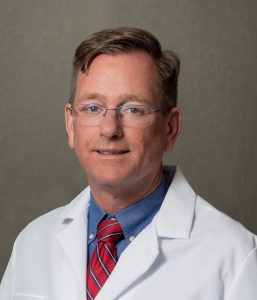Blockages in the Arteries - More than Just a Heart Problem
Many people are aware that blocked heart arteries can cause numerous cardiac conditions. Besides the heart, arteries throughout the body can also get clogged up with atherosclerotic plaque. The leg and the neck arteries are at risk for plaque build-up.
When this occurs in the legs, it is referred to as peripheral arterial disease. This can cause leg pain with ambulation seriously limiting your life and could potential lead to non-healing ulcers or gangrene.

Treatment options include modifying risk factors such as smoking, high cholesterol, diabetes and hypertension and minimally invasive options include balloon angioplasty and atherectomy with, or without, stenting. Sometimes advanced surgical procedures are required to open the arteries, clear the plaque or bypass the blockages to restore blood flow that was restricted by the buildup of atherosclerotic plaque.
The carotid arteries are another major artery at risk for atherosclerotic plaque build-up. Deborah Heart and Lung Center Vascular and Endovascular Surgeon James Herrington, MD, explained: “The carotid arteries are located in the neck and they are the main arterial supply to the brain. Carotid artery plaque build-up can lead to stroke. Sometimes people overlook these arteries as a potential source for ischemic stroke. However, carotid atherosclerosis can be successfully treated early before any stroke symptoms appear. Early detection and lifestyle modification can minimize your risk.“
“Carotid artery disease occurs when plaque builds up, causing hardening of the arteries, or atherosclerosis. This buildup narrows the carotid artery restricting blood flow. Plaque that has built up has the potential to break off or cause a platelet clot to form and break off leading to stroke symptoms.”
He added that there are a number of risk factors that can contribute to plaque buildup in the arteries including:
- Smoking
- Diabetes
- High blood pressure
- High cholesterol
- Older age
- Family history of stroke
- Alcohol use
- Recreational drug use
- Trauma to the neck area, which may cause a tear in the carotid artery
“Several of these risk factors are controllable and modifiable like smoking, high cholesterol, hypertension and diabetes whereas others such as age, heredity and trauma are not modifiable. So when you are working hard to keep your body in tip top cardiac shape by watching your blood pressure, sugar, and cholesterol, you are also keeping the rest of your arteries and vascular system healthy at the same time.”
Symptoms
Dr. Herrington noted: “Symptoms of carotid artery disease often take time to appear. Unfortunately the first symptom of plaque build-up could be a stroke, or a transient ischemic attack, or TIA, which is a small stroke that doesn’t cause any lasting damage.” Some symptoms Dr. Herrington said should raise a red flag include:
- Blurred vision
- Confusion
- Loss of memory
- Loss of sensation
- Problems with speech and language, including loss of speech
- Vision loss (partial or complete blindness)
- Weakness in one part of your body
- Problems with thinking, reasoning, and memory
Diagnosis & Treatment
“Early detection and treatment is important. Screening ultrasounds should be done in anyone aged 65 or older with a history of smoking, peripheral vascular disease, coronary artery disease and/or hypercholesterolemia. The importance of modifying your risk factors is immense. If you experience any neurologic symptoms, head to the nearest emergency room and the team will assess your symptoms and this testing may include the carotid arteries.”
Dr. Herrington added: “Treatment options include the gold standard of carotid artery surgery with a procedure called a carotid endarterectomy where vascular surgeons remove the plaque from the inside and reconstruct the carotid artery. There is also an option to stent the carotid artery in certain patients. A specialized cardiac and vascular center like Deborah also offers a transcarotid stent procedure done via a small neck incision.”
“Do not put yourself at risk. If you think there is a problem, make sure you discuss it with your doctor.”